Sa
Sachithanandam, Vallipuram (1913-1977)
Born Epoh (Malaysia), son of P. Vallipuram, and younger brother of V. Sittampalam, a founding member of the Lanka Sama Samaja Party. Educated Parameshwara College, Thinnavely (Jaffna Province, Ceylon). With his brother, helped build the Cigar Workers Union in Jaffna. Founding member, Lanka Sama Samaja Party, 1935. Entered University College, Colombo, and passed out in First Class with double degree in Mathematics. Went to England and enrolled in University of London, 1939. Passed the Civil Service Examination. Joined the India League and a Marxist study group with other Ceylonese students, London. Returned to Ceylon, married Gnanaratnam Muttiah, 1939. Entered Ceylon Civil Service. Delegate, Third BLPI National Conference (Calcutta), 1948. Called to the Bar, Lincoln’s Inn, London, 1959. Served as Commissioner, National Savings Movement, until his retirement in 1969. Practised law after retirement. Ran for Parliament from the Nallur Constituency (Jaffna) on LSSP ticket, 1971; contested again on the LSSP ticket shortly before his death.
Compiled by Charles Wesley Ervin
Saint-Simon, Comte (1760-1825)
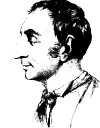 Comte Claude Henri de Ronvroy Saint-Simon: French Utopian socialist who took part in War of Independence of the United States; opposed Deism and promoted the study of Nature. Saint-Simon was a determinist, holding that everything in Nature and Society was governed by Laws, knowledge of which would allow us to understand the course of history. He held that the driving forces in history were science, morality and religion, but he did demonstrate the objective nature of the historical process and the role of property relations in its development.
Comte Claude Henri de Ronvroy Saint-Simon: French Utopian socialist who took part in War of Independence of the United States; opposed Deism and promoted the study of Nature. Saint-Simon was a determinist, holding that everything in Nature and Society was governed by Laws, knowledge of which would allow us to understand the course of history. He held that the driving forces in history were science, morality and religion, but he did demonstrate the objective nature of the historical process and the role of property relations in its development.
During the French Revolution, Saint-Simon was close to the Jacobins. He also participated in the War of Independence of the United States of America. He subscribed to the materialist current in the Enlightenment and opposed deism, advocating the study of nature, and was one of the first to see that politics was determined by economics and he advocated the development of the study of the laws governing history as an extension of the natural sciences.
Saint-Simon was the major influence on his pupil Auguste Comte, and the sources of Comte’s ideas are visible in the Letters. While Comte was a major influence on the development of Western European philosophy through the following century, Saint-Simon’s followers degenerated into a religious sect. See Letter from Geneva
Of Saint-Simon, Engels wrote in Socialism: Utopian and Scientific:
“Saint-Simon was a son of the great French Revolution, at the outbreak of which he was not yet 30. The Revolution was the victory of the 3rd estate – i.e., of the great masses of the nation, working in production and in trade, over the privileged idle classes, the nobles and the priests. But the victory of the 3rd estate soon revealed itself as exclusively the victory of a smaller part of this “estate”, as the conquest of political power by the socially privileged section of it – i.e., the propertied bourgeoisie. And the bourgeoisie had certainly developed rapidly during the Revolution, partly by speculation in the lands of the nobility and of the Church, confiscated and afterwards put up for sale, and partly by frauds upon the nation by means of army contracts. It was the domination of these swindlers that, under the Directorate, brought France to the verge of ruin, and thus gave Napoleon the pretext for his coup d’etat.
“Hence, to Saint-Simon the antagonism between the 3rd Estate and the privileged classes took the form of an antagonism between “workers” and “idlers.” The idlers were not merely the old privileged classes, but also all who, without taking any part in production or distribution, lived on their incomes. And the workers were not only the wage-workers, but also the manufacturers, the merchants, the bankers. That the idlers had lost the capacity for intellectual leadership and political supremacy had been proved, and was by the Revolution finally settled. That the non-possessing classes had not this capacity seemed to Saint-Simon proved by the experiences of the Reign of Terror. Then, who was to lead and command? According to Saint-Simon, science and industry, both united by a new religious bond, destined to restore that unity of religious ideas which had been lost since the time of the Reformation – a necessarily mystic and rigidly hierarchic “new Christianity.” But science, that was the scholars; and industry, that was, in the first place, the working bourgeois, manufacturers, merchants, bankers. These bourgeois were, certainly, intended by Saint-Simon to transform themselves into a kind of public officials, of social trustees; but they were still to hold, vis-a-vis of the workers, a commanding and economically privileged position. The bankers especially were to be called upon to direct the whole of social production by the regulation of credit. This conception was in exact keeping with a time in which Modern Industry in France and, with it, the chasm between bourgeoisie and proletariat was only just coming into existence. But what Saint-Simon especially lays stress upon is this: what interests him first, and above all other things, is the lot of the class that is the most numerous and the most poor (“la classe la plus nombreuse et la plus pauvre”).
“Already in his Geneva letters, Saint-Simon lays down the proposition that "all men ought to work". In the same work he recognizes also that the Reign of Terror was the reign of the non-possessing masses.
“See,” says he to them, "what happened in France at the time when your comrades held sway there; they brought about a famine.”
“But to recognise the French Revolution as a class war, and not simply one between nobility and bourgeoisie, but between nobility, bourgeoisie, and the non-possessors, was, in the year 1802, a most pregnant discovery. In 1816, he declares that politics is the science of production, and foretells the complete absorption of politics by economics. The knowledge that economic conditions are the basis of political institutions appears here only in embryo. Yet what is here already very plainly expressed is the idea of the future conversion of political rule over men into an administration of things and a direction of processes of production – that is to say, the "abolition of the state", about which recently there has been so much noise.
“Saint-Simon shows the same superiority over his contemporaries, when in 1814, immediately after the entry of the allies into Paris, and again in 1815, during the Hundred Days’ War, he proclaims the alliance of France and England, and then of both of these countries, with Germany, as the only guarantee for the prosperous development and peace of Europe. To preach to the French in 1815 an alliance with the victors of Waterloo required as much courage as historical foresight.”
Sakharov, Andrei (1921-1989)
Soviet physicist; led the team that built the H-bomb; called for ban on tests in 1961; Nobel Peace Prize 1975; exiled to Gorky in 1980, where he went on hunger strike; allowed to return to Moscow 1987; April 1989 elected to Congress of People’s Deputy representing the Academy of Sciences. [...]
Saklatvala, Shapurji (1874-1936)
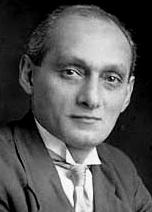 Although the celebrated Communist MP from the 1920s, Shapurji Saklatvala (‘Sak’ to many) was not a foundation member of the Communist Party, he joined it within months of its establishment, after the ILP’s Annual Conference had rejected a move to affiliate to the Communist International. He remained a loyal and active member of the Communist Party until his death in 1936.
Although the celebrated Communist MP from the 1920s, Shapurji Saklatvala (‘Sak’ to many) was not a foundation member of the Communist Party, he joined it within months of its establishment, after the ILP’s Annual Conference had rejected a move to affiliate to the Communist International. He remained a loyal and active member of the Communist Party until his death in 1936.
He was the third Indian Member of Parliament (MP) in the Parliament of the United Kingdom, after fellow Parsis Dadabhai Naoroji and Mancherjee Bhownagree.
Saklatvala was born in Bombay (now Mumbai), India, on March 28, 1874 the son of a merchant. A Parsi by background, he worked for his wealthy uncle’s firm, Tata Industries, but suffered from poor health and in October 1905 he was sent to England for medical treatment. Saklatvala became involved in left-wing politics and in 1907 he joined the SDF. Two years later he left to join the Independent Labour Party (ILP) and remained an active member and valued speaker across the country fro the next decade.
Saklatvala was adopted as the parliamentary candidate for Battersea North by the Battersea Labour Party and Trades Council, in June 1921. He had just resigned from the Independent Labour Party, and had joined the Communist Party. At that time it was possible to be both a member of the Communist Party and the Labour Party at the same time. There were no bans on joint membership until 1925. Shapurji Saklatvala was elected the Labour MP for Battersea North at the General Election in 1922. He lost his seat a year later, but was re-elected, this time as a Communist, at the December 1923 election. He represented the South London constituency for five years until defeated by a Labour candidate in 1929.
Throughout all three of Saklatvala’s election campaigns, when he was the candidate of the Battersea Trades Council, the press was vitriolic in its attack on his revolutionary politics. During the 1923 campaign, Hogbin, Saklatvala’s opponent, fed information to the press—which enthusiastically followed his line—that there were ‘foreign gangs’ operating in the constituency, with the supposed aim of breaking up Hogbin’s meetings. Hogbin referred to a gang of ‘Irish rebels’, including ‘twenty gunmen’ and another of ‘continental and Russian communists’.
But it is profoundly significant that for five years, from Saklatvala’s initial adoption until 1926, there was no challenge to his candidacy from within the local Labour movement. When a challenge did come, it was in response to national influences, and not local politics, and had nothing whatsoever to do with Saklatvala’s racial origin.
Although initially the local ‘coloured’ activist John Archer and Saklatvala worked together in the Battersea Labour Party and Trades Council, when the split came over the admissibility of communists, they were on different sides. Archer supported the Communists’ expulsion, and when an official Trades and Labour Council was established in July 1926, became the first secretary of the North Battersea Divisional Labour Party. He campaigned against the old Trades Council and championed Saklatvala’s Labour rival at the 1929 General Election. “Although Saklatvala and Archer were non whites operating in an overwhelmingly white Labour movement, their careers in the 1920s illustrate that politics and not race was the determining factor when it came to allegiances.”
Saklatvala faced many other pressures. His secretary, Reg Bishop, in an obituary in the Daily Worker wrote: “For the first year or two after his election as the MP for Battersea North, there were many who tried to get him to break from the Communist Party. The Under Secretaryship of State for India was the smallest of inducements held out if he would only be more orthodox in his politics”.
During 1926 Saklatvala was a strong supporter of the miners. After one speech made in Hyde Park he urged the army not to fire on the strikers. Saklatvala was arrested and found guilty of sedition was sentenced to two months in Wormwood Scrubs Prison.
For its continued support for Saklatvala, the Battersea Labour Party and Trades Council was disaffiliated in 1926, and a few months later a new Labour Party and Trades Council was established. There was rivalry between the two organisations for a period, but by the time of the 1929 General Election the old Trades Council existed in name only. In 1927 Stephen Sanders, a long time activist in the Battersea Labour movement, was adopted as the official Labour candidate, and this effectively signalled the end of Saklatvala’s success. He lost the seat in 1929, and his vote declined even further at the election of 1931. By the time of the next General Election in 1935, in line with the Communist Party’s new strategy he urged his supporters in the constituency to vote Labour.
Saklatvala’s socialism came about as a direct result of his opposition to colonialism. He settled in Britain from India in 1905 at the age of 30 having left India, in part, because of his brushes with the British authorities. In 1909, at Manchester, where he was working as a departmental manager for Tata’s, he joined the Independent Labour Party. From then onwards Saklatvala was to spend much of his time in pursuit of his two main concerns—socialism and anti colonialism.
Although his socialist ideas, under the impact of the Russian Revolution, underwent a radical transformation, his approach to colonial freedom remained consistent. That is he constantly sought to build a united front between the workers of Britain and the forces for liberation in the colonies. This approach can be seen in one of the first Labour movement organisations to concern itself with anti-imperialism, the Workers Welfare League of India. The league was established by Saklatvala in 1917. Saklatvala was the first secretary of the League’s Indian Committee.
A number of national Trade Unions were affiliated to it, as were numerous trade union branches. At a time when support for colonialism was strong, even amongst organised sections of the working class, the Workers Welfare League of India, strongly influenced by Saklatvala’s united front approach, made some headway in breaking down barriers between the British and Indian Labour movements.
The League Against Imperialism, which was not solely concerned with British colonialism, was another body that Saklatvala was to play a prominent role in. Formed in 1927, the League drew together many of the national liberation movements. At its founding Congress in Brussels in February 1927, there were 175 delegates from 37 countries. Saklatvala’s commitment to the League led to his arrest and brief.
In a message to the founding congress of the Communist Party of India in 1925, Saklatvala had made clear his own, and the British Party’s commitment to the building of a broad anti-colonial alliance, as the way to win self determination. In pursuit of this, he then made a widely publicised visit to India, in 1927, which lasted three months and was so successful that, on his return, the British Government denied him any future access to the country of his birth. During the visit he was given the freedom of a number of Indian cities, and granted an official welcome by the Madras and Calcutta City authorities. He met and entered into a dialogue with Gandhi, later published as a pamphlet by the British Party entitled Is India Different?
Saklatvala also made contact with Communist groups that had recently been established. He also met Phil Spratt and George Allison, both members of the British Communist Party, sent work under cover to help organise the Indian trade union movement. Soon after Saklatvala’s visit Allison was deported back to England. In 1928 he was replaced by Ben Bradley, two years after the visit Bradley, Spratt and thirty one other active trade unionists were arrested.
They were tried at Meerut in front of an English civil servant, and after four years deliberation, the prisoners were given sentences of between three years, and transportation for life. The Meerut Conspiracy Trial received wide publicity, and because of the indignation it aroused, the sentences were later reduced, and some of the prisoners released. When Ben Bradley, whose ten year sentence was commuted, returned to England in 1933, he was met at Victoria Station by Saklatvala on behalf of the Communist Party. Continuing to play a high profile role for the Party, Shapurji Saklatvala died in 1936.
From Graham Stevenson.
Samarakkody, Edmund Peter (1912– 1992)
Born Panagoda (Siyane Korale, Ceylon), son of Peter Charles Samarakkody, younger brother of Siripala Samarakkody, the future president of Ceylon National Congress, and nephew of D.S. Senanayake. Educated St. Thomas’ College, Mt. Lavinia, and Law College. Joined Colombo South Youth League, 1932. Became part of the circle aroung the “T Group” led by Philip Gunawardena. Helped the “T Group” form the South Colombo Motorworkers Union, 1933. Founding member Lanka Sama Samaja Party, 1936; elected to its first Central Committee. Strike leader, Vavasseur Coconut Mill in Toluwagoda and organiser of the Colombo Commercial Company Fertiliser Works, 1937. LSSP delegate to Indian National Congress, Haripura, 1938. Jailed, June 1940. Escaped from jail, April 1942. Arrested again, 1943 and jailed, 1943-44. Member, Bolshevik Leninist Party of India (Ceylon Unit), 1945-50. Ran for parliament (Mirigama constituency), 1947 (unsuccessful). Member, Dehiwala-Mount Lavinia Urban Council. Treasurer, All-Ceylon Congress of Samasamaja Youth Leagues. Member of Parliament, 1952-64. Founding member, Lanka Sama Samaja Party (Revolutionary), 1964. Founder, Revolutionary Sama Samaja Party/Revolutionary Workers Party, 1968. Author: Whither the Soviet Union? (published illegally by LSSP, ca. 1940-42), The Crisis of Local Government (1954), Workers’ Councils, Janata Committees, and Socialist Transformation (1970), Vamanshika Peramuna? (1978), Whither United Socialist Alliance? (1988), and Eksat Samajavadi Peramuna: koybata da? (1988).
Compiled by Charles Wesley Ervin
Samuel, Raphael (1934-1996)
British Marxist historian who specialised in British history and British labour history.
As a British Marxist Historian, Raphael Elkan Samuel was a pioneer of British labour history, oral history, in researching and writing ‘history from below’ and a founder of the historical journal ‘History Workshop’.
Born in London to Jewish/British parents, Samuel was educated at King Alfred School and at Balliol College, Oxford, where he was a student of the Marxist historian Christopher Hill. A socialist and a communist from a young age, Samuel became a leading figure of the British New Left and a key figure in British Marxist historiography and history-writing. His contribution to the fields of British history, British labour history, British cultural history, the history of London, historiography, the history of the British Left, the history of British Communism and in other fields of cultural history and heritage, remain vital parts of understanding British history and British labour history since the Industrial Revolution.
Samuel taught history at Ruskin College, Oxford, from 1962; a post he held until his death in 1996. In the latter part of his life Samuel was also Professor of History at the University of East London.
Samuel’s left-wing politics were developed from an early age. His mother, Minna Nerenstein, was an active member of the British Communist Party, and instilled in Samuel left-wing principles and left-wing values, ideas that he would carry for the rest of his adult life. Samuel himself joined the CPGB as a teenager but left the Party in 1956 over the Soviet invasion of Hungary. Remaining a committed Marxist and socialist, Samuel went on to become a leading member of the New Left in Britain, and a dedicated socialist historian and socialist essayist.
Until he left the CPGB in 1956, Samuel was a member of the CPGB History Group, a section of CPGB members interested in history and historical research. Samuel always maintained that the Group was vital to the post-war explosion of British history and history-writing in general, and to his own development as a historian. Despite leaving the CPGB and the History Group in 1956, Samuel remained on friendly and comradely terms with members of the British Communist Party and the History group.
Samuel was involved in the founding of two important historical journals: Past and Present (founded in 1952) and History Workshop Journal (founded in 1976). He edited and contributed extensively to the latter, which generated from the History Workshop Movement – a movement of historians which was established in 1967 and which was dedicated to ‘history from below’, social history, the history of everyday life, and people’s history. Samuel founded the journal through his activities as a tutor in history at Ruskin, which brought together professional historians, independent historians, adult education students, worker historians, trade union activists and other sections of the British Left. Like Past and Present, History Workshop Journal endures today as a vital historical journal.
Samuel wrote extensively on a variety of historical subjects, but he was particularly interested in British history and labour history. His work often connected the history of every-day working-class life with wider developments in cultural, social and political history. In later life his interests expanded and he wrote, also, on the connections between history and heritage, historiography, oral history, national history, national memories, national myths, national myth-making, patriotism, crime, culture, ideology, Left politics, Thatcherism, and the history of London and the London working-class. Key books and works of his included a study of left-wing Theatre Movements (Theatres of the Left), a study of crime in the East End of London (East End Underworld), a study of the Miners Strike of 1984 (The Enemy Within), volumes on British national identity, British patriotism and British national history, and numerous volumes of working-class history in the nineteenth and twentieth centuries.
Samuel was also highly regarded as a tutor and teacher of history, especially via his position as a tutor of history at Ruskin College. Here Samuel was involved in teaching mostly adult education students and trade-union workers. Many of his students went on to major leadership roles in the British labour and socialist movement, and many credited him with inspiring them with a love of education and learning. His abilities as an inspirer of historical work was just as impressive as his own extensive output. Much of his later work on working-class history and working-class life, alongside several other volumes and books, remained unfinished, cut short by his early death in 1996. His educational legacy remains today in the continuing legacy of adult and worker’s education in the United Kingdom of Great Britain. Most of Samuel’s work intersected between labour history, socialist activism and education in the labour movement.
Politically after 1956, Samuel was heavily involved in the emerging New Left in Britain and wrote extensively for the New Left Review and other New Left periodicals. One of his most important historical works was a multi-part history and analysis of the British Communist Party, The Lost World of British Communism, which was first published in New Left Review between 1984 and 1987. A revised and expanded version of these essays was published posthumously in book form, as The Lost World of British Communism, in 2006. The essays discussed the history of British Communism but also commented on the state of British Communism and the British Left in the 1980s, prior to the CPGB’s collapse in 1991. Samuel also published extensively in other areas, outside of academic work, especially in British newspapers, specifically on British History and British left-wing politics.
Samuel was heavily supportive of most left-wing campaigns during the post-war era in Britain, from peace work to heritage. He was heavily involved in the creation of The Partisan Coffee House, a left-wing coffee house in Soho, London, which operated from 1958 to 1962.
Personally, Samuel was married to the writer and critic Alison Light, from 1987 to 1996. This marriage ended with Samuel’s death in 1996.
Raphael Samuel died on the 9th of December 1996. He was interred in Highgate Cemetery. Samuel’s archive of papers relating to labour history are held at Bishopsgate Library.
Selected Publications: Village Life and Labour (1975), Miners, Quarrymen and Saltworkers (1977), People’s History and Socialist Theory (1981), East End Underworld (1981), Culture, Ideology and Politics (1983), Theatres of the Left: 1880 – 1935 (1985), The Lost World of British Communism (1986), The Enemy Within: The Miners’ Strike of 1984 (1987), Patriotism: The Making and Unmaking of British National Identity (1989), Patriotism (Volume 2): Minorities and Outsiders (1989), The Myths We Live By (1990), Theatres of Memory: Volume 1: Past and Present in Contemporary Culture (1996), Theatres of Memory: Volume 2: Island Stories: Unravelling Britain (1997), The Lost World of British Communism (2006)
Sand, George (1804-1876)
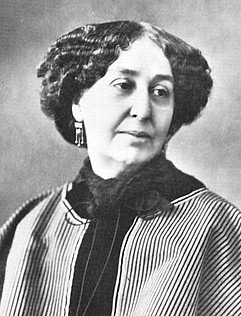 Born Amandine-Aurore-Lucile Dupin, later Baroness Dudevant, French novelist and early feminist who wrote under the pen name of George Sand.
Born Amandine-Aurore-Lucile Dupin, later Baroness Dudevant, French novelist and early feminist who wrote under the pen name of George Sand.
Born in Paris to a father of aristocratic lineage and a “common” mother, Sand was raised for much of her childhood by her grandmother at the family estate, Nohant, in the French region of Berry, a setting later used in many of her novels. In 1822, she married Baron Casimir Dudevant, and they had two children. In 1835, taking the children with her, she left her husband.
Her first novel, Rose et Blanche (1831) was written in collaboration with Jules Sandeau, from whom she allegedly took her pen name, Sand.
After parting from her husband Sand made less and less a secret of preferring men’s clothes to women’s, although she continued to dress as a woman for social occasions. This male “disguise” enabled Sand to circulate more freely about Paris, and gave her increased access to venues that might have been denied to a woman of her social standing. This was an exceptional practice for the 19th century, where social codes-especially in the upper class-were of the highest importance. As a consequence Sand lost a good deal of the privileges attached to being a Baroness. Ironically, it was also a part of the mores of this period that women of higher classes could live physically separated from their husbands without losing face, if they didn’t show any blatant irregularity to the outer world.
In addition to her novels and plays, Sand authored literary criticism and political texts.
She was linked romantically with Alfred de Musset, Franz Liszt and Frédéric Chopin. She died at Nohant, France at the age of 72.
Sanger, Margaret (1879-1966)
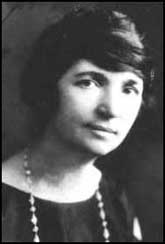 Born Margaret Higgins in New York to a large Irish Catholic family. She became a nurse in 1902 and that same year married architect William Sanger. The Sangers eventually settled in new York City where they met with a circle of leftist “New York Intellectuals” such as Max Eastman, John Reed and Emma Goldman. Margaret joined both the Liberal Club, the Women’s Committee of the NY Socialist Party, and was supporter of the anarchist-run Ferrer Center and Modern School. She was also active in some labor struggles involving the IWW.
Born Margaret Higgins in New York to a large Irish Catholic family. She became a nurse in 1902 and that same year married architect William Sanger. The Sangers eventually settled in new York City where they met with a circle of leftist “New York Intellectuals” such as Max Eastman, John Reed and Emma Goldman. Margaret joined both the Liberal Club, the Women’s Committee of the NY Socialist Party, and was supporter of the anarchist-run Ferrer Center and Modern School. She was also active in some labor struggles involving the IWW.
Margaret Sanger’s work as a nurse gave her experience and an opportunity to focus on her interest in sex education and women’s health. In 1912 she began writing a column on sex education for the New York Call entitled “What Every Girl Should Know.” This was her first of several encounters with censorship and being accused of presenting obscene material.
Sanger read Marx, but never accepted the tenets of Marx’s thinking. She harshly criticizes Marxists for not recognizing the true cause of the misery of the proletariat – irresponsible parenting and reckless breeding.
Repulsed by the inability of most women to obtain effective birth control, which she believed was fundamental to securing freedom and independence for working women, Sanger began challenging the 1873 federal and state Comstocks. She published The Woman Rebel, a radical feminist monthly that advocated militant feminism, including the right to practice birth control. Again censored and under threat of imprisonment, Sanger left for England.
Sanger was joined by a group of English intellectuals such as Havelock Ellis, whose support allowed her to continue her work on birth control internationally as a writer fundraiser, and lecturer. The birth control movement grew to the point where a legal, doctor-run birth control clinic began in New York, 1923. She helped found the International Planned Parenthood Federation (IPPF) in 1952 and served as its first president until 1959. For her criticism of Marxism see the Margaret Sanger section.
Sanial, Lucien (1836-1927)
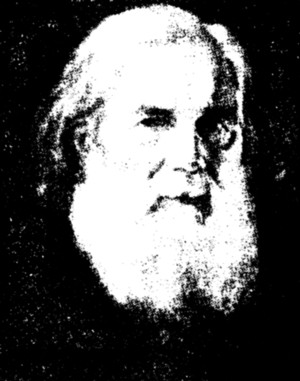 Sanial was a pioneer of Marxist ideas in America He was born in France as Lucien Delabarre. Sent by a French newspaper to report on the American Civil War, he settled in the US, where he became active in the labor movement as an advocate of the formation of an independent working-class party. In 1877, he joined the Socialistic Labor Party (the forerunner of the DeLeonist Socialist Labor Party). Even before De Leon joined in 1890, he was one of the prominent members of the Marxist wing that won control of the party in 1889.
Sanial was a pioneer of Marxist ideas in America He was born in France as Lucien Delabarre. Sent by a French newspaper to report on the American Civil War, he settled in the US, where he became active in the labor movement as an advocate of the formation of an independent working-class party. In 1877, he joined the Socialistic Labor Party (the forerunner of the DeLeonist Socialist Labor Party). Even before De Leon joined in 1890, he was one of the prominent members of the Marxist wing that won control of the party in 1889.
He was the first editor, from 1891-2, of the SLP paper, The People, the SLP candidate for the mayor of New York in 1896, and a delegate to the Congresses of the Second International. He resigned from the SLP in 1902 and, in 1903, joined the Socialist Party of America. In 1917 supported the entry of the USA into World War One.
Described by Everard in Jack London’s Iron Heel as “one of the statistical authorities of that time.”
Sapronov, Timofei Vladimirovich (1887-1937)
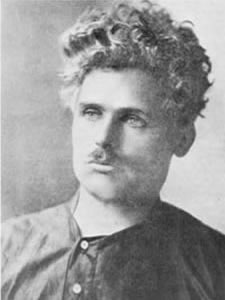 A house-painter by trade, Sapronov joined the revolutionary movement in 1911 and the Bolsheviks in 1912. Following the October Revolution he became Chairman of the Moscow Provincial Executive Committee of the Soviets. In 1918 he joined the 'Left Communist' group in the Party which was led by Bukharin, Radek, Osinsky and V. M. Smirnov which opposed the Brest-Litovsk peace in favour of a revolutionary war against Germany.
A house-painter by trade, Sapronov joined the revolutionary movement in 1911 and the Bolsheviks in 1912. Following the October Revolution he became Chairman of the Moscow Provincial Executive Committee of the Soviets. In 1918 he joined the 'Left Communist' group in the Party which was led by Bukharin, Radek, Osinsky and V. M. Smirnov which opposed the Brest-Litovsk peace in favour of a revolutionary war against Germany.
Leader of an oppositional group inside the Russian CP in the early 1920s when Lenin was still active, the Group of Democratic Centralism, or Decemists, which held semisyndicalist and ultraleft views. They adhered to the United Opposition bloc in 1926, although their views remained ultraleft; the Left Opposition found it necessary to differentiate itself from the Decemist position in favor of organizing a new communist party, rather than fighting as a faction of the CP. The Decemist leaders were expelled and exiled at the same time as the Left Opposition’s.
On 27 September 1937, during the Great Purge, he was taken from prison and sentenced to death. He was executed the following day.
See Sapronov's speech, December 11, 1923.
Sartre, Jean-Paul (1905-1980)
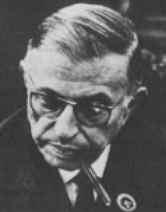 French novelist, playwright, and exponent of Existentialism and became involved with Socialism in the 1950s. He declined the Nobel Prize for Literature in 1964.
French novelist, playwright, and exponent of Existentialism and became involved with Socialism in the 1950s. He declined the Nobel Prize for Literature in 1964.
Sartre lost his father at an early age and grew up in the home of his maternal grandfather, Carl Schweitzer, uncle of the medical missionary Albert Schweitzer and professor of German at the Sorbonne. The boy, who wandered in the Luxembourg Gardens of Paris in search of playmates, was small in stature and cross-eyed.
Sartre went to the Lycée Henri IV in Paris and after the remarriage of his mother, to the lycée in La Rochelle. From there he went to the prestigious École Normale Supérieure, from which he was graduated in 1929. Sartre resisted what he called “bourgeois marriage,” but while still a student he formed with Simone de Beauvoir a union that remained a settled partnership in life. It was also at the École Normale Supérieure and at the Sorbonne that he met several persons who were destined to be writers of great fame; among these were Raymond Aron, Maurice Merleau-Ponty, Simone Weil, Emmanuel Mounier, Jean Hippolyte, and Claude Lévi-Strauss. From 1931 until 1945 Sartre taught in the lycées of Le Havre, Laon, and Paris. Twice this career was interrupted, once by a year of study in Berlin and the second time when Sartre was drafted in 1939 to serve in World War II. He was made captured in 1940, put in a prison, but released a year later.
During his years of teaching in Le Havre, Sartre published Nausea (1938), his first claim to fame. This novel, written in the form of a diary, narrates the feeling of revulsion that a certain Roquentin undergoes when confronted with the world of matter - not merely the world of other people but the very awareness of his own body. According to some critics, Nausea, must be viewed as a pathological case, a form of neurotic escape. Most probably it must be appreciated also as a most original, fiercely individualistic, antisocial piece of work, containing in its pages many of the philosophical themes that Sartre later developed.
Sartre took over the phenomenological method, which proposes careful, unprejudiced description rather than deduction, from the German philosopher Edmund Husserl and used it with great skill in three successive publications: Imagination: A Psychological Critique (1936), Sketch for a Theory of the Emotions (1939), and L’Imaginaire: The Psychology of Imagination (1940). But it was above all in Being and Nothingness (1943) that Sartre revealed himself as a master of outstanding talent. Sartre places human consciousness, or nothingness, in opposition to being, or thingness. Consciousness is not matter and by the same token escapes all determinism. The message, with all the implications it contains, is a hopeful one; yet the incessant underlining meaning that human endeavour is and remains useless makes the book tragic as well.
Having written his defence of individual freedom and human dignity, Sartre turned his attention to the concept of social responsibility. For many years he had shown great concern for the poor and the disinherited of all kinds. While a teacher, he had refused to wear a tie, as if he could shed his social class with his tie and thus come closer to the worker. Freedom itself, which at times in his previous writings appeared to be a gratuitous activity that needed no particular aim or purpose to be of value, became a tool for human struggle in his brochure Existentialism and Humanism (1946). Freedom now implied social responsibility. In his novels and plays Sartre began to bring his ethical message to the world at large. He started a four-volume novel in 1945 under the title Les Chemins de la liberté, but after the publication of the third volume, Sartre changed his mind concerning the usefulness of the novel as a medium of communication and turned back to plays.
One play followed another, and all of the plays, in their emphasis upon the raw hostility of man toward man, seem to be predominantly pessimistic; yet, according to Sartre’s own confession, their content does not exclude the possibility of a morality of salvation. Other publications of the same period include a book, Baudelaire (1947), a vaguely ethical study on the French writer and poet Jean Genet entitled Saint Genet, Actor and Martyr (1952), and innumerable articles that were published in Les Temps Modernes, the monthly review that Sartre and Simone de Beauvoir founded and edited.
After World War II, Sartre took an active interest in French political movements, and his leanings to the left became more pronounced. He became an outspoken admirer of the Soviet Union, although he did not become a member of the Communist Party. In 1954 he visited the Soviet Union, Scandinavia, Africa, the United States, and Cuba. Upon the entry of Soviet tanks into Budapest in 1956, however, Sartre’s hopes for Communism were sadly crushed. He wrote in Les Temps Modernes a long article, Le Fantôme de Staline, that condemned both the Soviet intervention and the submission of the French Communist Party to the dictates of Moscow. Over the years this critical attitude opened the way to a form of “Sartrian Socialism” that would find its expression in a new major work, Critique of Dialectical Reason (1960). Sartre set out to examine critically the Marxist dialectic and discovered that it did not exist in the Soviet Union, nor could it under the persecution of individual freedom. Although he still believed that Marxism was the only philosophy for the current times, he believed it had become rigid and fixed and that, instead of adapting itself to particular situations as it should, it compelled the particular to fit a predetermined universal, something directly opposed to the philosophy of Historical Materialism. Whatever its fundamental, general principles, Sartre believed that Marxism must learn to recognise the existential concrete circumstances that differ from one collectivity to another and to respect the individual freedom of man. The Critique, gained little renown, however, and a projected second volume was abandoned. Instead, Sartre prepared his autobiography (Words) for publication, for which he was awarded the 1964 Nobel Prize for Literature, an offer that was refused.
Combining Existentialism with Marxism, Sartre attempted a revision of Marxist theory, stating that “Man is nothing else but that which he makes of himself.” Sartre explained that the ultimate responsibility of all humans was first to form themselves; explaining that the effects of one’s environment and historical position were irrelevent next to the power any human has to take to their own path; and secondly that humans had a social responsibility to help society. This position, representing a view of life from a petty-bourgeois position, was directly opposed to Marx who wrote: “The mode of production of material life conditions the social, political and intellectual life process in general. It is not the consciousness of men that determines their being, but, on the contrary, their social being that determines their consciousness.”
From 1960 until 1971 most of Sartre’s attention went into the writing of a four-volume study called Flaubert. Two volumes with a total of some 2,130 pages appeared in the spring of 1971. This huge enterprise aimed at presenting the reader with a “total biography” of Gustave Flaubert, the famous French novelist, through the use of a double tool: on the one hand, historical materialism and, on the other, Sigmund Freud’s illuminations of the dark recesses of the human soul through explorations into his childhood and family relations. Under the motto that “commitment is an act, not a word,” Sartre often went into the streets to participate in rioting, in the sale of left-wing literature, and in other activities that in his opinion were the way to promote the revolution.
The enormous productivity of Sartre came herewith to a close. His mind, still alert and active, came through in interviews and in the writing of scripts for motion pictures. He also worked on a book of ethics. However, his was no longer the power of a genius in full productivity. Sartre became blind and his health deteriorated. In April 1980 he died of a lung tumour.
See the Jean Paul Sartre Archive.
Sastry, Vellala Srikantaya Seshagiri (1912– ca. 1982)
Party pseudonym: M. Naidu.
Born Rajampet (Andhra Pradesh), son of V.R. Srikantaya. Went to UK in 1936 to train as a journalist. Joined India League, 1936. Joined Communist Party of Great Britain in Birmingham. Secretary, Indian Workers Union (Association), 1943. Central Committee, Revolutionary Communist Party of Britain, 1944-46. Married an English ballet dancer. Returned to India, 1946, and Joined Bolshevik Leninist Party of India in Bombay. Editor, New Spark, 1947. Attended Bolshevik Leninist Party of India conference, 1947; elected to Central Committee and Political Bureau. Entered SP with BLPI, 1948. Returned to Cuddapah and ran a Tutorial Institute.
Compiled by Charles Wesley Ervin
Saussure, Ferdinand de (1857-1913)
Swiss linguist whose ideas on structure in language laid the foundation for the structuralist school in linguistics and social theory. The whole line from Jakobson to Lévi-Strauss to Althusser to Foucault and Derrida trace their ideas back to Saussure’s simple idea that the meaning of a word is to be understood through its relation to other words, as opposed to the positivist line of research dominant in his day, which sought to understand language through analysis of sounds and their impact on the nervous system.
While still a student, Saussure established his reputation with a brilliant contribution to comparative linguistics, Memoir on the Original System of Vowels in the Indo-European Languages. In it, he explained how vowel alternations in Indo-European languages take place. Though he wrote no other book, he was enormously influential as a teacher, lecturing at the École des Hautes Études in Paris from 1881 to 1891 and as professor of Indo-European linguistics and Sanskrit (1901-13) and of general linguistics (1907-13) at the University of Geneva. His name is best known, however, for the Course in General Linguistics, a reconstruction of his lecture notes and other materials by two of his students.
While viewing language as a social rather than a biological phenomenon, he saw language as a structured system that can be viewed synchronically and diachronically (i.e., historically) but he insisted that the methodology of each approach is distinct and mutually exclusive. His own work focussed on the synchronic relations, i.e., the structure created by like and differing signs, or signifiers, taken as a distinct structure, formally unrelated to any structure inherent in that which is signified. He also introduced two terms that have become common currency in linguistics – “parole,” the speech of the individual person, and “langue,” the systematic, structured language (such as English) existing at a given time within a given society. These are ideas are usually regarded as starting point of Structuralism in Linguistics.
Saville, John (1916-2009)
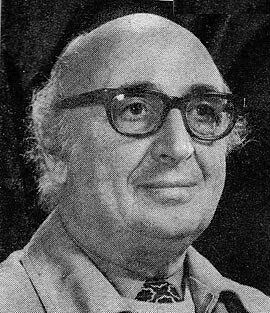 Marxist, historian, dissident Communist in 1956, set up The Reasoner with E.P. Thompson, after leaving the CP set up The New Reasoner, which merged in 1960 with Universities & Left Review to create New Left Review, founding editor of The Socialist Register in 1964 with Ralph Miliband.
Marxist, historian, dissident Communist in 1956, set up The Reasoner with E.P. Thompson, after leaving the CP set up The New Reasoner, which merged in 1960 with Universities & Left Review to create New Left Review, founding editor of The Socialist Register in 1964 with Ralph Miliband.
See John Saville Archive.
Savinkov, Boris Viktorovich (1879-1925)
a.k.a. V. Ropshin: Writer and revolutionary. Member Social Revolutionary Combat Organization. Involved in assassination of Count Plehve and Grand Duke Sergei. Volunteer in French Army during the War. Assistant Minister of War to Kerensky. Anti-Bolshevik 1918-21. Sentenced to 10 years under the Bolsheviks. Committed suicide 1925.